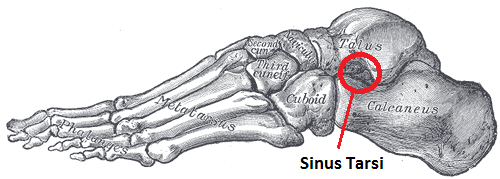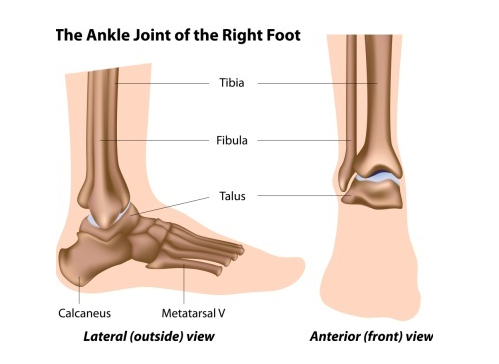What is the Sinus Tarsi?
This is a tunnel, or an anatomical depression between the talus and the calcaneus, in the subtalar joint. Within the tunnel lies several soft tissue structures: internal ligaments, muscles, nerves, blood vessels and fat. These structures contribute to the balance and stability of the ankle.
What is Sinus Tarsi Syndrome (STS)?
STS is a clinical description for anterolateral ankle pain caused by synovitis (inflammation) in the sinus tarsi tunnel.
What causes STS?
The cause of STS can vary but it is usually the result of instability of the subtalar joint due to ligamentous injuries. This can be caused through:
- Acute trauma (sprain; falls): instability following an ankle sprain can cause excessive movement in the subtalar joint, leading to inflammation and STS.
- Foot biomechanics: people with a highly pronated foot type are more likely to suffer from STS due to the increased pressure in the sinus tarsi.
- Hypermobility: it has been theorised that hypermobility in the subtalar joint could impart increased forces causing STS (Helgeson, 2009).
What are the symptoms of STS?
- Pain in the anterolateral ankle
- Tenderness within the sinus tarsi
- Swelling
- Ankle stiffness, especially first thing in the morning
How to get a diagnosis
Along with a symptom-lead clinical diagnosis, the best way to diagnose STS is through an MRI scan, which will reveal any synovitis in the area.
Treatment Options
- RICE: Rest is important for the recovery of STS as any movement which affects the sinus tarsi will prevent efficient healing. Combine this with ice and anti-inflammatory medication to reduce pain or swelling in the area.
- Footwear: Supportive footwear with a secure fastening and heel counter must be worn to prevent excess subtalar joint motion and stabilise the foot.
- Insoles: These may be prescribed to limit motion at the subtalar joint and reduce symptoms associated with STS. If foot biomechanics are at fault, orthotics can also address this to prevent further occurrence.
- Taping or strapping: This is used to limit motion temporarily at the subtalar joint.
- Steroid injections: These can be a very effective way of quickly reducing the inflammation in the area.
Rehabilitation
- Proprioception exercises: Single leg standing for 30 seconds, ten times per day, on either foot, will challenge the body’s response to an altered base of support. Eyes closed will make this harder as balance is affected by the lack of sight, therefore the body is challenged further to maintain upright stance.
- Range of Motion exercises: Complete the following exercises 10 times daily, which will help prevent stiffness in the ankle.
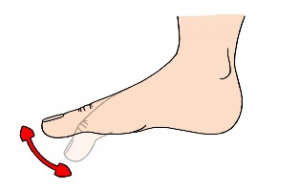 Toe raises: extend and flex the toes.
Toe raises: extend and flex the toes.
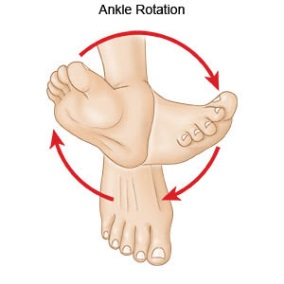 Ankle rotation: move the foot in a clockwise direction 10 times, then anticlockwise 10 times.
Ankle rotation: move the foot in a clockwise direction 10 times, then anticlockwise 10 times.
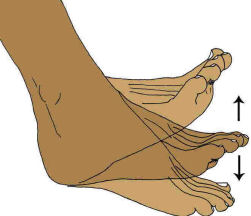 Foot raises: extend and flex the foot at the ankle joint.
Foot raises: extend and flex the foot at the ankle joint.
- Joint mobilisation: If there is any ankle stiffness, this can help release structures which are causing poor range of motion.
- Strengthening exercises: Long term rehab will include strengthening of the muscles around the ankle: this includes the peroneal muscles on the outside of the ankle, the gastrocnemius and soleus which make up most of the calf muscles, and the tibialis posterior muscle on the inside of the ankle.

